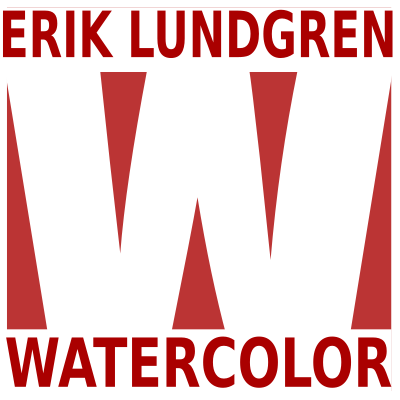Coffee | A watercolor exercise

Here is a fairly simple exercise painted with only three colors. You can use any colors that suit the painting, I used ivory black, phthalo blue and burnt sienna. The blue color can be changed to any blue. The brown is also interchangeable as long as it is an orange-brown color, however avoid red browns such as English red, Venetian red and the like. The black color must be neutral, if you were to use e.g. Payne’s gray, you have to mix in a little brown to get the color neutral, it feels unnecessarily difficult.
The idea of the exercise is to practice gradient and wet on wet, to obtain nice transitions from a certain value to a lighter or darker one.
Feel free to paint this on a small paper, it is good if the cup is not bigger in the painting than in reality.


Step 1
Start with everything behind the cup, use a light color (lots of water). If you want to make it easy for yourself: paint the entire background with a neutral color. If you want to make it a little “nicer”, let the color tone vary between cold (blue) and warm (brown). I painted the reflection of the cup a little bluer than the rest which is slightly warm in tone. Do this wet on wet without sharp edges between the different colors.
Don’t forget to paint inside the cup’s ear, please save the small highlights that are in the cup’s reflex.

Step 2
Now you will paint the reflection of the coffee cup. It should preferably be a little bluish, but you can perhaps also see warmer color tones in my painting. Fine gradations are achieved by starting a certain surface where it is darkest and then adding water or lighter color later to create a slow transition from darker to lighter. Don’t forget the highlights in the cup and the shadow from the cup’s handle, which must be painted wet on wet. Also paint the joints between the tiles in the background and the reflections in the sink.

Step 3
Paint the cup in the same technique as the reflex in step 2. Don’t forget the highlight under the handle of the cup. Feel free to make the cup slightly lighter than the reflection of it.

Step 4
The coffee in the cup must also be painted, do this with two different colors. A dark bluish and an even darker black-brown. The small shine in the coffee surface is important, leave it unpainted, it should be completely white. The border between the brown coffee and the bluer reflection of the tiles in the coffee should be a little soft, wait to paint the second surface until the first is just damp enough to achieve this.













